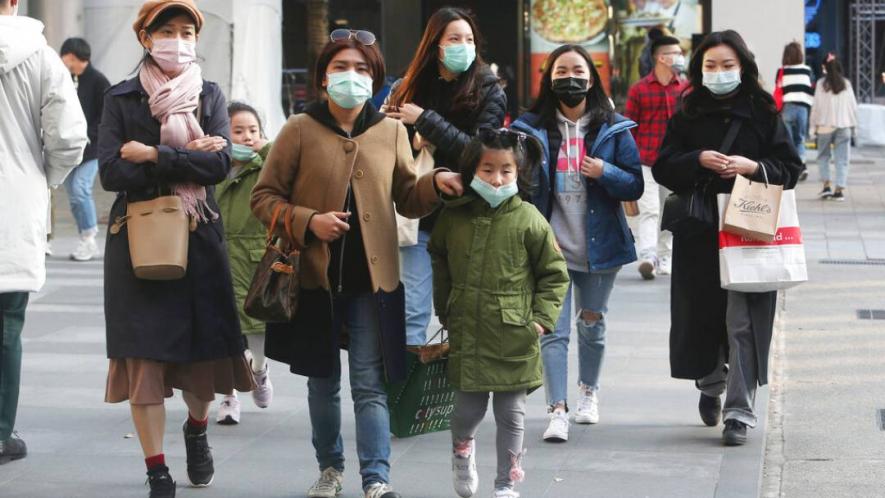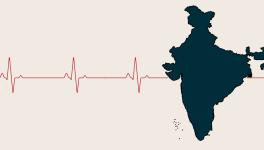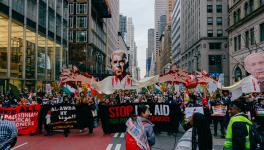COVID-19: How China Supercharged Conventional Epidemic Control with Modern Science and Technology

Though the novel coronavirus or COVID-19 epidemic appears to be slowing down in China, it could still create new epicentres in South Korea, Italy and Iran. If this happens, we could be moving towards a pandemic. South Korea saw 214 new infections as of February 25. Towns in Northern Italy are now under lockdown, emerging as another centre of the epidemic with people returning from Italy spreading the infection to other countries. On February 25, Italy reported more than 100 new cases. Though the numbers in Iran are reported to be under 100, news that the Deputy Health Minister is himself one of those infected has prompted fears that numbers could be much higher than what has been detected.
In China, apart from Hubei province, the epicentre of the epidemic, only 9 confirmed new cases have been reported on February 25, a continuation of the trend seen over the last few weeks. Even in Hubei, figures of those infected have dropped to below 500, far removed from about 2,500 per day which we were seeing only two weeks ago.
Unlike China and the Herculean efforts put in by its Government and the people, containment in other parts of the world is not going to be as simple. The saving grace is that countries seeing higher infection rates have all followed the Chinese path: lock-down of affected towns and localities, isolating patients, and quick follow-ups on their contacts. Though Iran, under brutal US sanctions, would have problems arranging medicines, diagnostic kits and the like, it has a much stronger state compared to many others in the region.
Mike Ryan, Executive Director of the World Health Organisation’s (WHO) Health Emergencies Programme, stated in a press conference on February 24: “It is time to do everything you would do in preparing for a pandemic. But in declaring something a pandemic it’s too early...When we mean prepare we mean to detect cases, prepare to treat cases, prepare to follow contacts, prepare to put in place adequate containment measures. It’s not a hundred different measures there are probably 5 or 6 key interventions.”
The WHO has handled the COVID-19 epidemic with responsibility and restraint. It has made it clear that it is a new virus and that we just do not know enough. The virus originated from a family of bat viruses, had an intermediate host, probably pangolins, and then infected human beings. Further transmission has been human to human. According to WHO, we know much less about its transmissibility than the flu virus, for example. This makes containment more difficult and leaves open the possibility for a global pandemic.
If the new outbreaks can be delayed by even a few weeks, the world would have more ability to deal with the epidemic. More importantly, the global flu season in the northern hemisphere is nearing its end, and that would release many more hospital beds and health personnel for handling a new epidemic.
Do we have drugs to treat the COVID-19 infections? A combination of HIV drugs—lopinavir with a low dose of ritonavir—can be used to fight the novel coronavirus. WHO has confirmed that the antiviral drug remdesivir, developed originally against Ebola (although it did not serve this purpose) is effective against the virus. Another effective counter is blood plasma transfusion in patients from those who have already recovered. It can be used to treat seriously sick patients as it already has antibodies against the virus. This is not a new treatment, but with more than 30,000 patients recovering, there is now a large pool of donors who can be harnessed for such transfusions.
What about vaccines? A number of vaccines are under development and will go into clinical trails soon. A new vaccine development platform using genetic engineering—messenger Ribonucleic Acid (RNA) or mRNA—is now ready for such trials. This route is faster than traditional vaccine routes. However, any vaccine would still have to go through a series of animal and human trials before it can be used as a preventive measure. The WHO’s Chief Scientist, Dr.Soumya Swaminathan, in a press conference on February 11, said that it would take at least between 12 to 18 months for a vaccine to become available for wider use. In short, we will be ready with a vaccine for the next round of the disease, but not this one.
In this genuine humanitarian crisis and the need for global solidarity, US rumour mills have continued with their propaganda war on China. The news establishment, led by The New York Times and The Washington Post, have simultaneously blamed China for being “secretive” and for “not doing enough”. The Western media has also taken China to task for supposedly draconian steps that are human rights violations and are not warranted to contain the epidemic. In their propaganda of trying to portray China as an authoritarian state distant from its people, they are unwilling to accept that the Chinese citizens have shown exemplary discipline and faith in their government. They have sacrificed their earnings, accepted the enormous hardship imposed by the quarantines and lock downs. Their doctors and nurses are leading from the front. The proof of this is the continuing fall of the affected numbers in China with the Chinese Government virtually confining the disease to only one province in the country.
The Chinese have made huge sacrifices, both on the human side and in terms of a loss to their economy. Ignoring this sacrifice has been the hallmark of the US media. We, of course, have no expectations from the US leadership under Trump. However, even the WHO’s voice on the what the Chinese have achieved has been blanked out by the US media. I am going to quote a few paragraphs from Dr. Bruce Aylward, former Assistant Director-General of the WHO and one of the two team leaders of the WHO-China Joint Mission COVID-19. This is from a joint press conference that the two team leaders— Dr. Aylward and Dr. Liang Wannian—addressed in Beijing on February 24
Speaking in this press conference, Dr. Aylward said:
“In the face of a previously unknown disease, China has taken one of the most ancient approaches for infectious disease control and rolled out probably the most ambitious, and I would say, agile and aggressive disease containment effort in history.
China took old-fashioned measures, like the national approach to hand-washing, the mask-wearing, the social distancing, the universal temperature monitoring... they took this old approach and then turbo-charged it with modern science and modern technology in a way that was unimaginable even a few years ago.
Just a couple of small examples. As they cleared these giant hospitals to make space for overwhelming numbers of COVID-19 cases, they moved a huge amount of the routine provision of medical services onto online platforms and other mechanisms that they’ve really come to a cutting edge with. And when we were in Sichuan, wondering how they were working with the remote areas, they showed us that they have prioritized a roll-out of a 5G platform so that they could do real-time contact, support, with investigators in the field. We asked to see it, and in two minutes up on the big screen they pull up an epidemiological investigation team that was in the field, was having problems with something hundreds of kilometers away, and was getting walked through it by the top experts from the province. So it brought a lot of attention to understand this strategy, because it’s fundamentally different to the way most people think about approaching a dangerous respiratory pathogen in the modern era.
And this brought us to the second issue about how did they make it happen; make the strategy actually translate in impact? What they’ve done has only been possible because of tremendous collective commitment and will of the Chinese people from the most bottom-level community leaders we met and talked to, to the governors at the top. It was an extraordinary, what we call all-of-government, all-of-society approach that many of you are feeling because you live here and you operate it. But it is rare to see that.”
Dr. Aylward also talked about the sacrifice that the Chinese people have made in containing the epidemic, and the debt rest of the world owes to the Chinese people. According to him, the all-of-government and all-of-society approach that the Chinese have shown is rare. This is the socialist ethos of China, buying the rest of the world time, pioneering new epidemic control methods, and giving us the hope that this dangerous new pathogen can be contained. It is something the Western media with its blind prejudice against China and its people still refuses to recognise.
Get the latest reports & analysis with people's perspective on Protests, movements & deep analytical videos, discussions of the current affairs in your Telegram app. Subscribe to NewsClick's Telegram channel & get Real-Time updates on stories, as they get published on our website.
























